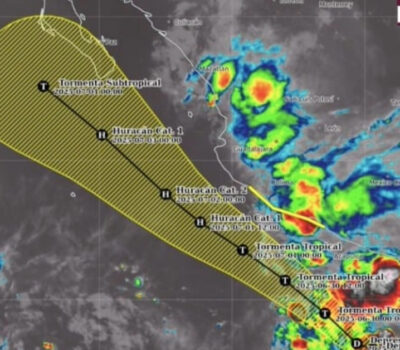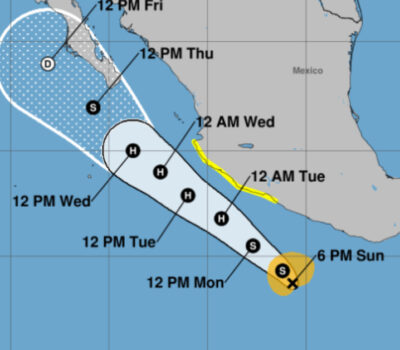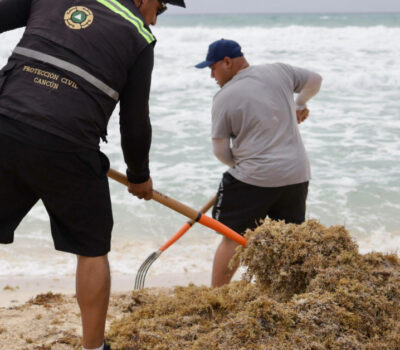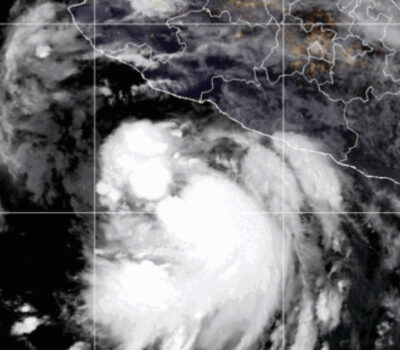At the end of 2014, Mexico’s 16 billionaires were worth an average of nearly $9 billion.
That same year, the bottom 20% of Mexicans — nearly 25 million people — were worth an average of $80.
Economic hardship is widespread in Mexico, which is home to more than 120 million people, more than half of whom lived in poverty at the end 2012. Now inequality and wage disparity have emerged as further challenges to the development of Latin America’s second-largest economy.
According to a study of the 34 member countries of the Organization of Economic Cooperation and Development, the gap between wages and hours worked is larger in Mexico than in any other member country.
The gap in wealth and in wages is visible across Mexico’s economic strata. According to OECD figures, the country’s richest 10% earn more than 30 times what the poorest 10% make — making it the most unequal of the organization’s 34 countries. Mexico’s bottom 20% doesn’t make enough to eat three meals a day.
OECD data show that Mexican workers labored 2,327 hours on average during 2014, far ahead of the 1,796 hours worked by Americans.
Those workers, however, were only paid $12,850 (based on purchasing power parity) during the year, which ranks at the bottom of the OECD’s list. Estonia was second to last at $21,020. Americans earned $57,139 during the same period.
In parts of the country where pay is better (i.e. urban zones), the minimum salary for Mexicans is 70.1 pesos ($4.35) per day, according to El Daily Post. The government also sets a monthly minimum income for well-being, including essential purchases like food, transportation, and hygiene, that stands at 2,628 pesos ($163.13) in urban areas.
A worker making the minimum salary would need to labor for just over 37 days per month to bring in that monthly minimum — assuming they didn’t have any dependents to care for.
In total, writes the El Daily Post, more than half of all Mexican workers fall short of this monthly standard.
This shortfall is worse in less developed areas. In the southern state of Chiapas, 70% of workers don’t earn enough to care for two people, based on the minimum monthly salary level.
“The situation is serious to such a degree that it violates what’s stipulated in the Constitution. The minimum salary must guarantee a decent standard of living,” Gerargo Esquivel, a Harvard economics professor, told El Daily Post.
Indeed, many Mexicans fall below Mexican, and even Western, standards of living. According to a report from news site Animal Politico, one out of four Mexican municipalities has living conditions similar to sub-Saharan Africa in terms of illiteracy, access to healthcare, and homes without toilets or solid floors.
This state of affairs, with more than 7 million Mexicans living as if they were in Angola, comes despite a 16% increase between 1990 and 2012 in the budget of a variety of social programs aimed to lift Mexicans out of poverty and hunger. In that time, poverty in Mexico has been reduced by less than two percentage points.
Even though Mexico has made economic advancements over the last few years, in recent decades the rate of individual advancement has slowed. According to the Center for Economic and Policy Research, between 1960 and 1980, per-person GDP grew by 98.7%; over the last 20 years, it grew by 18.6%. The poverty rate at the end of 2012, 52.3%, was similar to the rate at the end of 1994. Wages, adjusted for inflation, rose just 2.3% between 1994 and 2012.
The reason some social programs have been ineffective is that “it was expected that the economy would grow, and the economy did not grow,” according to Gonzalo Hernández, executive secretary of the National Counsel for Evaluation of Social Development Policy (Coneval).
“Now you have better-fed children, who go to school more but leave [school] for work and don’t have jobs; so they migrate or remain in poverty,” Hernández told Animal Politico.
In Centro Sante Fe, the country’s largest shopping plaza just west of Mexico City, attendants selling books and magazines at chain store Sanborns earn in two weeks what billionaire Carlos Slim — Mexico’s richest man and owner of Sanborns — makes in 20 minutes of banking transactions.
In addition to Slim, 2,540 Mexicans hold assets of $30 million or more. They represent an extreme minority in the country — but one that holds 43% of Mexico’s total individual wealth.
Slim’s fortune alone equals 6.3% of Mexico’s gross domestic product. The income of the country’s poorest 20% equates to 4.9% of GDP.
Mexico’s uneven growth has a geographic dimension as well. As Shannon O’Neil of the Council on Foreign Relations noted, industrial and tech areas of north-central Mexico have experienced growth rates in the double digits, and states bordering the US, boosted by industry and trade, have growth rates above the Mexican national average.
However, falling oil prices have hindered growth in southern states (the country now gets more from remittances than oil exports) and the violence-wracked states of Michoacan and Guerrero were both at the bottom of the UN human development index rankings for the country.
“These differing trends threaten to aggravate already deep economic divides, creating virtuous and vicious circles in terms of infrastructure, education, and opportunities,” wrote O’Neil.
Though new developments may aggravate these divides, the divides themselves are not new.
Inequality in Mexico is longstanding, according to Cristina Bayón, an ecologist specializing in the subject. In Mexico, there is an “extremely high tolerance” for an unequal society, she told El Daily Post, “which explains why the rich can be so ostentatious in this country.”
Ostentatious or not, the rich are certainly aware of their presence.
“They let the boss know in advance,” Óscar, a salesperson at Sanborns, said of a visit by Carlos Slim’s son to the store. “A lot of bodyguards came first and closed the store, so he had the store and the restaurant all to himself. But he was very nice.”
At the end of 2014, Mexico’s 16 billionaires were worth an average of nearly $9 billion.
That same year, the bottom 20% of Mexicans . . .











